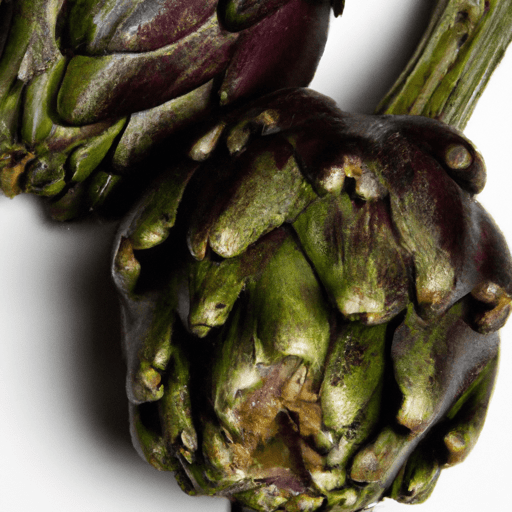Artichoke Bottoms: A Culinary Delight
If you’re a fan of artichokes, you’re probably familiar with their delicious leaves and hearts. However, have you explored the culinary wonder that is the artichoke bottom? These tender, flavorful morsels, often overlooked, deserve a moment in the spotlight. In this blog post, we’ll dive into the fascinating world of artichoke bottoms and discover their taste, common culinary uses, nutritional value, and intriguing history. Let’s get started!
Taste: A Delicate and Distinctive Flavor
Artichoke bottoms boast a taste that is both delicate and distinctive. When properly prepared, they offer a subtle sweetness with subtle nutty undertones. The texture is tender, slightly firm, and buttery, which adds a luxurious aspect to any dish. Whether you’re a seasoned artichoke enthusiast or new to their flavors, artichoke bottoms are a delightful surprise awaiting your palate.
Common Culinary Uses: Versatility at Its Finest
Artichoke bottoms serve as a versatile ingredient, adding depth and complexity to a wide range of dishes. Here are some popular ways to incorporate them into your cooking:
1. Appetizers and Salads
Artichoke bottoms are often used in appetizers and salads due to their tender texture and vibrant flavor. They can be stuffed with a variety of fillings such as creamy cheeses, herbs, and breadcrumbs, then baked until golden and delicious. When sliced or diced, they make a delightful addition to salads, adding a unique twist to your greens.
2. Pasta and Grain Dishes
For pasta and grain lovers, artichoke bottoms make an excellent companion. Toss them into your favorite pasta dish or stir them into risottos and pilafs to elevate the overall taste and appearance. Their delicate flavor pairs well with a wide range of ingredients, making them a versatile addition to countless recipes.
3. Stir-fries and Sautéed Dishes
When quickly sautéed or stir-fried, artichoke bottoms retain their signature tenderness while acquiring a delightful caramelized edge. Combine them with other vegetables, protein sources, or even seafood to create a savory medley of flavors that will leave your taste buds longing for more.
4. Stews and Braises
Artichoke bottoms have a remarkable ability to absorb the flavors of rich stews and braises, making them an excellent choice for hearty, slow-cooked dishes. Whether you’re preparing a meat-based stew or a vegetarian casserole, their velvety nature will enhance the overall taste and texture of the dish.
Nutritional Value: A Healthy Addition to Your Plate
Apart from their delightful taste and culinary uses, artichoke bottoms also offer numerous health benefits. They are low in calories and fat, making them an excellent option for those aiming to maintain a healthy lifestyle. Artichoke bottoms are packed with essential nutrients, including dietary fiber, vitamin C, vitamin K, and antioxidants. Additionally, they are a good source of folate, magnesium, and potassium, contributing to overall well-being.
History and Fun Facts: Uncovering the Artichoke’s Heritage
Artichokes have a long and intriguing history dating back centuries. Originating in the Mediterranean region, they were considered a delicacy highly coveted by both the ancient Greeks and Romans. Over time, artichokes traversed borders and became an integral part of various cuisines worldwide.
Did you know that artichokes are actually classified as a flower bud? If left to reach maturity, they would bloom into a beautiful purple or blue flower reminiscent of a thistle. This unique characteristic adds an element of charm to the artichoke plant.
Conclusion
Artichoke bottoms, often overlooked, possess a distinctive taste, versatility in the kitchen, and valuable nutritional properties. Whether you choose to use them in appetizers, pasta dishes, stir-fries, or stews, they are sure to enhance the flavors of your creations. So, take a moment to celebrate the artichoke bottom in your culinary adventures and experience the wonders it has to offer.
Artichoke Bottoms
Origin: Artichoke bottoms come from the artichoke plant (Cynara cardunculus var. scolymus), which is a type of thistle native to the Mediterranean region. It is believed to have originated in the area around modern-day Iran.
Common Uses: Artichoke bottoms are the edible part of the artichoke plant, specifically the fleshy base of the artichoke flower bud. They are commonly used in various culinary preparations such as salads, antipasti, pasta dishes, and sauces. They can also be marinated, grilled, or served as a side dish.
Nutritional Benefits: Artichoke bottoms offer several nutritional benefits. They are low in calories and fat while providing dietary fiber, which can help support digestive health. They also contain vitamin C, vitamin K, potassium, magnesium, and antioxidants such as cynarin, which is known for its potential liver-protective effects.
Unique Properties and Historical Significance: Artichokes have a unique flavor and texture, often described as nutty and slightly sweet. They are historically significant and have been cultivated for thousands of years. The ancient Greeks and Romans considered artichokes to be a delicacy and valued them for their potential medicinal properties. In modern times, artichokes are associated with Mediterranean cuisine and are popular in numerous culinary traditions around the world.
Note: The term “artichoke bottoms” specifically refers to the base of the artichoke, but the whole artichoke head is often used in cooking.




Use the share button below if you liked it.
It makes me smile, when I see it.